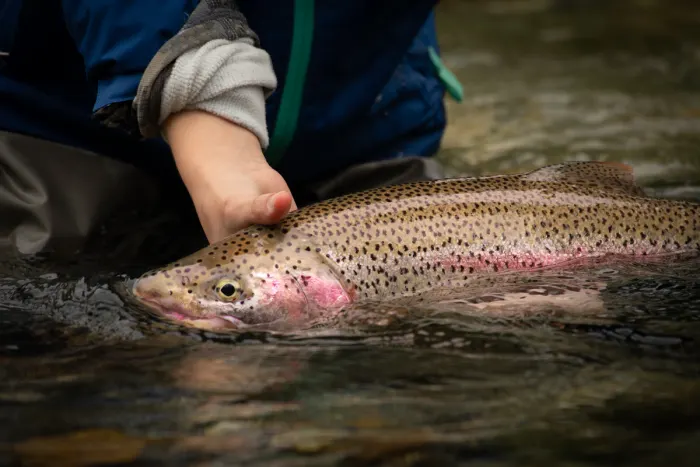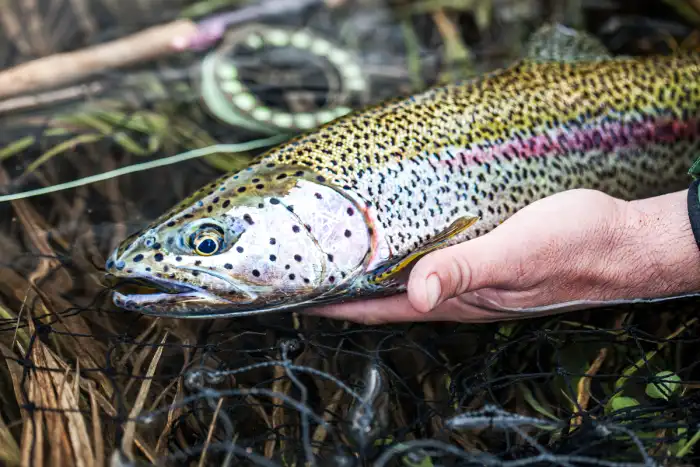Spring brings a unique opportunity for fly anglers who venture beyond the rushing rivers. Lakes and ponds offer a treasure trove of hidden moments, waiting to be exploited by those who understand the subtle movements happening beneath the surface. This article delves into the world of stillwater fly fishing, with a focus on targeting caddis pupae and bloodworms – two effective techniques that can turn a slow day into a productive outing.
The Caddis Pupae: A Stillwater Advantage
Imagine a mid-June afternoon on a pristine BC lake. The initial excitement of dry fly action has faded. But wait! A closer look reveals fluttering travelers on the surface – mayfly duns perhaps? Not quite. These are Traveler Sedges, hinting at a story unfolding below.
Unlike their riverine brethren, stillwater caddis pupae have a distinct advantage – a calm environment. Freed from the current’s grip, they ascend straight up, unlike their downstream-bound counterparts in rivers. This unique behavior presents a golden opportunity for fly anglers.

Mimicking the Marvel: Flies and Techniques
The key to unlocking this hidden moment lies in the fly selection and presentation. Flies like the Knouff Lake Special mimic the crucial pupal stage, complete with soft hackle that replicates the frantic paddling motion.
Full sinking or intermediate sinking lines are your best bet. Cast out, letting the fly sink to the desired depth, and then comes the magic – a fast strip retrieve. This imitates the rapid ascent of the pupae, triggering strikes from opportunistic trout. Remember, the erratic movement is key, not necessarily a perfectly vertical strip.
Bloodworm Bounty: Capitalizing on Calm
Spring winds can be a blessing in disguise for stillwater anglers. The churning dislodges bloodworms – the larval stage of chironomids – from their usual home in the lakebed. This brief window presents another opportunity to put fish on the hook.
The telltale sign? Bloodworms in a trout’s throat after a catch. If you’re lucky enough to witness this firsthand, target them like any other chironomid. Suspend your favorite bloodworm pattern under an indicator, keeping it 6-12 inches off the bottom.

Stillwater vs. River Techniques: Key Differences
While the bugs and their development stages might be similar, the approach is what sets stillwater fishing apart. Here, forget the nymphing techniques used in rivers. Stillwater bugs move independently, and bloodworms don’t move at all.
For caddis pupae, casting and retrieving with an erratic strip is key. Bloodworms rely on your presentation to mimic their minimal movement, with a slight chop on the water surface sometimes offering an added attraction.
Developing Your Stillwater Intuition
The biggest challenge? Recognizing these hidden moments. It’s a combination of experience, observation, and a dash of trial and error. Spend time on the water, hone your awareness, and develop an intuition for what lies beneath the surface. Remember, the more you observe, the more you’ll understand the language of the lake.
So, the next time you find yourself on a stillwater adventure, don’t be discouraged by a lull in activity. Look for the subtle signs, experiment with your techniques, and unlock the hidden potential of spring fly fishing on lakes!
Images/Source: MensJournal





